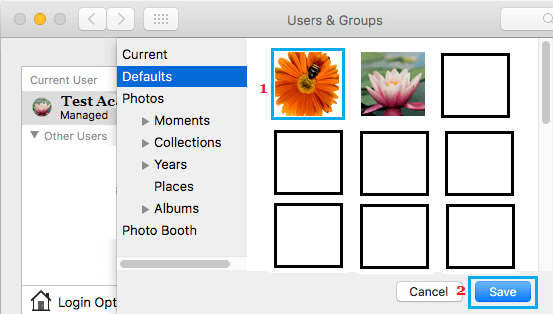Mac Choose Default Photo Library
Sep 03, 2019 You can also choose pictures from the Picture folder. Even your image in another folder then Click ‘+’, navigate to and select the folder, then click choose. Leave your reply, on How to Change desktop background Picture on Mac OS X Yosemite – 10.10. Nov 13, 2016 How to find and change Apple’s default wallpaper on macOS Sierra. /Library/Desktop Pictures and hit Go. Photo: Ste Smith/Cult of Mac. 7 rows To change preferences in the Photos app on your Mac, choose Photos Preferences. Aug 22, 2017 How do I change the default location and style of photo imports in Windows 10 Photos? With Win 8.1, you could set the desired destination and import folders were yyyy-mm-dd format. Changing default location of photo imports with win10. As of right now, all imported photos go into the pictures library by default. An efficient way to send.
Nov 12, 2019 If you use the iCloud Photo Library service, all the images in your Photos or iPhoto Library are stored in iCloud, and any new photos you take with an iOS device are added to it and are accessible on all your devices that have iCloud Photos enabled. Despite this, the images and videos in your iCloud Photo Library should be backed up just like. Nov 23, 2016 Moving a Mac’s Photos Library. If you hold down the Command key while you drag the library file, the Mac will copy it to the new location and then delete the file. The Choose Library box.

A robust and feature filled application, iPhoto is a great way to organize your picture library. iPhoto includes Events, Places and Faces, which can arrange photos by date, geo-location and facial recognition software respectively. You’re also able to create slideshows, photo books and albums.
With today’s HD camcorders and high megapixel cameras, storing all your photos on the computer can take up a large portion of the hard drive. When your iPhoto Library becomes to large to stay on your internal hard drive, it’s time to move it to an external or network drive.
First you must locate the iPhoto Library file, which should be located in your Pictures folder. Open a new Finder window by clicking on its logo in the dock.
Click on the Pictures folder in the left-hand sidebar. If you don’t see the Pictures folder here, you may need to select your Home folder first and then Pictures.
The libman.json file fails schema validation if it contains two libraries with the same library name for a given provider. Oracle library cache. Restore library filesTo restore library files from within Visual Studio, there must be a valid libman.json file in the project root. NoteLibMan only supports one version of each library from each provider.
Inside the Pictures folder, click on the iPhoto folder. Here you will see the iPhoto Library file.
Control + click on the iPhoto folder and select copy iPhoto. If you have chosen where to move the Library folder, connect that external hard drive or other storage peripheral now.
The external or other drive will appear in the Finder window in the left-hand column. Select it and Control + click in the first column of folders. Select Paste “iPhoto” from the contextual menu. This copying process may take a few minutes depending on the size of your iPhoto library. The iPhoto folder will now appear on your external drive.
Mac Choose Default Photo Library Free
Close the Finder windows and locate the iPhoto application in your dock or Applications folder. Important: hold down the Option key on the keyboard while clicking on iPhoto to open it.
A pop-up window will appear asking you to Choose Photo Library. Click Choose Library…
The browser window will appear. Click on the external hard drive in the left-hand column, choose iPhoto and then click on the iPhoto Library file.
Mac Choose Default Photo Library App
iPhoto will now store all of your current pictures on the external hard drive. Any future photos you import or copy into iPhoto will be stored in the new location on the external hard drive.